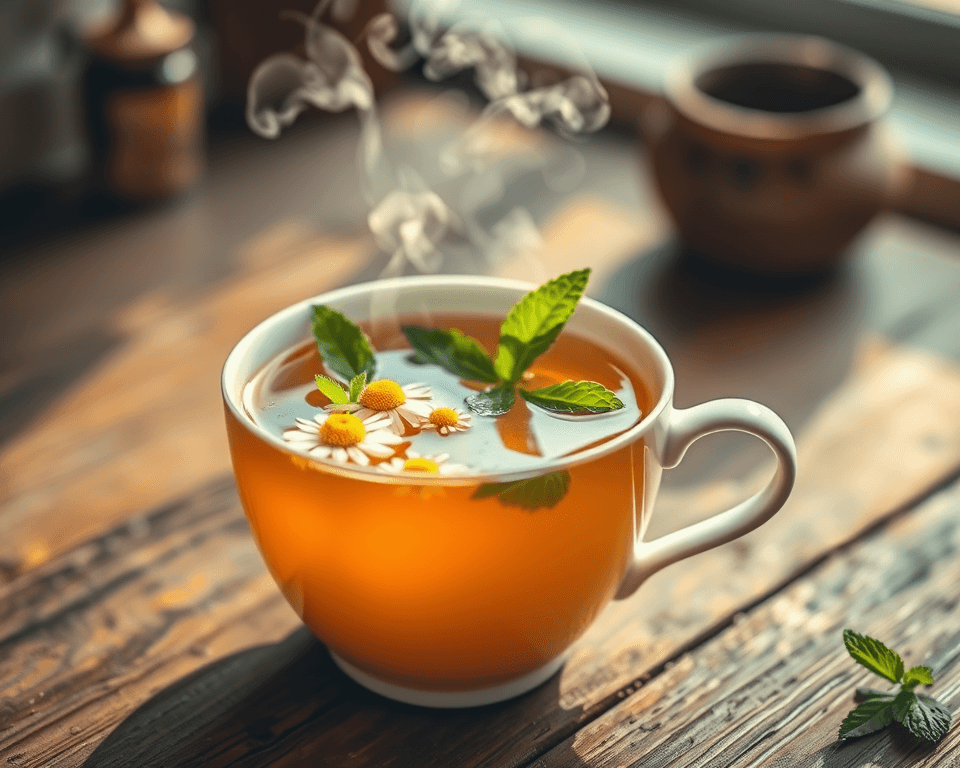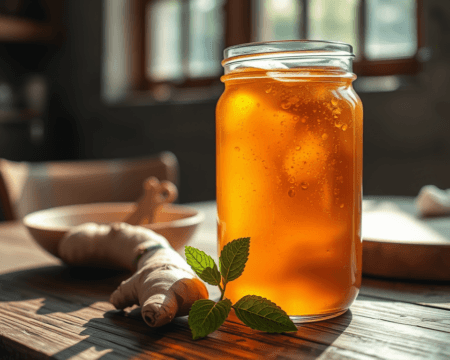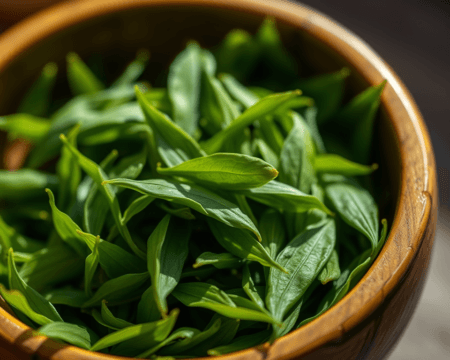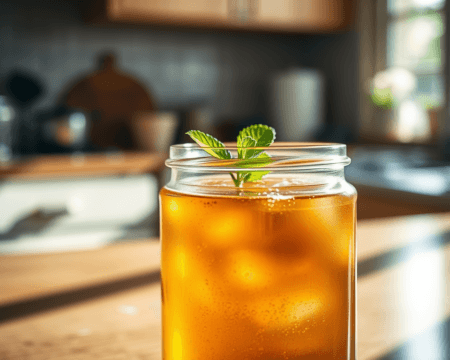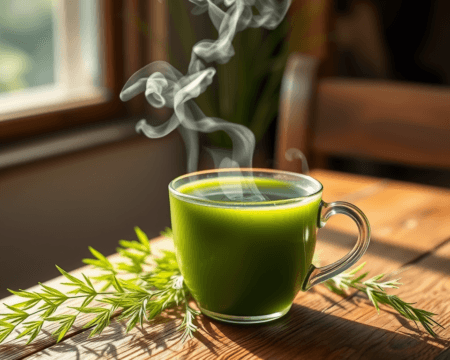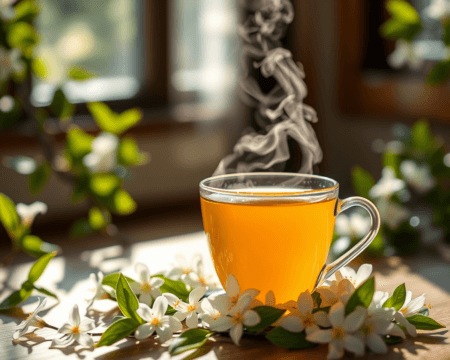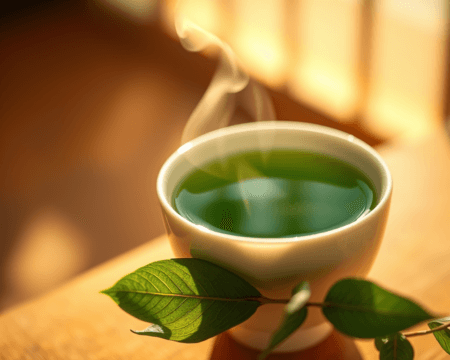I’ve been around the block with body aches—those nagging discomforts that seem to show up at the worst possible times. It’s like your body is playing a cruel joke on you. But here’s the thing: I’ve found a game-changer that most people overlook—herbal teas! Just think about it; sipping something warm that can actually help ease muscle tension and common body aches? Sign me up!
Key Takeaways:
– Chamomile tea isn’t just calming; it’s known for anti-inflammatory effects and improvement in sleep quality.
– Peppermint tea packs a punch with menthol, helping to relax muscles and provide headache relief.
– Combining both teas could elevate the benefits, creating a soothing blend that tackles multiple aches.
Introduction to Herbal Teas and Body Aches
Understanding Body Aches and Natural Remedies
Body aches can range from muscle tension after a workout to general discomfort from stress or a cold. We’ve all experienced it—those annoying little pains that nag at you like that one kid in school who just wouldn’t leave you alone. The cool part? There’s a whole world of natural remedies out there, and herbal teas top the list.
When you’re looking for a natural pain relief solution, consider the soothing properties of herbal remedies. They can often be potent alternatives to over-the-counter meds, which can have some gnarly side effects. They may seem minor, but everyday discomfort can really pile up and mess with your quality of life. Taking a step toward whole-body wellness with herbal remedies opens the door to holistic healing methods that harness nature’s own power.
The Role of Herbal Teas in Pain Relief
Herbal teas are more than just a warm hug on a cold day; they’re chock-full of phytochemicals that can act like natural analgesics. You’ve got chamomile, peppermint, and a whole menu of options to choose from. These soothing beverages aren’t just for sipping during a cozy night in—they can help with inflammation and even act as mild sedatives.
The infusion properties of these teas provide benefits that go beyond taste, offering anti-inflammatory effects that can help manage pain. When you brew up a cup, you’re not just getting a drink; you’re engaging in a natural method of pain management that’s been around for centuries. Seriously, who wouldn’t want to sip on something that calms your mind and helps with those pesky aches?
Chamomile Tea: A Soothing Ally
Benefits of Chamomile Tea for Pain Relief
If you haven’t tried chamomile tea yet, what are you waiting for? This little find is a secret weapon against body aches. The properties of chamomile work wonders by relaxing your muscles and decreasing inflammation. With its anti-inflammatory effects, it’s no wonder this tea has a reputation for easing tension. Plus, it has a soft, calming flavor that can knock out stress and anxiety—two common culprits when it comes to discomfort.
Let’s talk about apigenin, a compound found in chamomile that helps enhance sleep quality. Think about it—when you sleep better, your body can heal and recover more effectively, which in turn helps alleviate pain. It’s like a beautiful cycle of wellness! It also acts as a digestive aid, offering relief when your stomach isn’t cooperating. So whether you’re dealing with muscle tension or a cramp, chamomile might just be your new best bud.
Scientific Evidence Supporting Chamomile
You know I love a good science-backed claim. Several research studies have explored chamomile’s effectiveness as a natural pain reliever. It’s not just me and my grandma who swear by it; clinical trials have shown positive outcomes related to its biological activities.
For example, research indicated that participants who consumed chamomile tea reported reduced levels of anxiety and discomfort. Some even found that their aches were more manageable and didn’t disrupt their day-to-day activities. There’s also anecdotal evidence from countless users who’ve turned to this herbal powerhouse for relief. When the research backs it up, you know it’s worth a shot!
Brewing Chamomile Tea for Maximum Effect
Alright, let’s talk about preparation. You can’t just throw some chamomile leaves in a cup and expect magic. Here’s the play: brew it right for maximum impact. First, get your water temperature just below boiling—around 200°F should do the trick. Let those flowers steep for at least 5 minutes to extract all that good stuff. You want flavor and potency, right? If you’re feeling adventurous, mix in a bit of honey or lemon for a twist.
Optimal techniques mean you’re not just getting a drink; you’re maximizing the health benefits of your chamomile preparation. Play around with the flavor extraction to personalize your experience, and don’t be shy about herbal combinations. A pinch of lavender or a slice of fresh ginger could amp up the soothing properties.
Peppermint Tea: A Refreshing Remedy
How Peppermint Tea Alleviates Aches
Moving on to peppermint tea, a refreshment that doesn’t just taste good—it can practically work miracles. With its cooling effect, peppermint is fantastic for those aches that sneak up when you least expect it, like during a tiring workday or that intense workout.
What’s the magic behind it? Menthol is the rockstar component here. It helps relax muscles, providing tension relief and has been known to ease headaches like nobody’s business. If you’ve ever felt a headache creeping in, a cup of peppermint tea can be like hitting the refresh button for your mind and body. Bonus? It’s also great for digestive health, helping to ease cramps and other related discomfort.
Supporting Studies on Peppermint’s Efficacy
You guessed it—peppermint tea isn’t just pretty packaging. There’s clinical evidence to back it up. Studies have shown that therapeutic properties in peppermint can help alleviate headaches, digestive woes, and even muscle cramps. It’s like having a buddy to tackle those annoying aches alongside you.
Participants in various trials reported significant symptom relief thanks to peppermint’s calming properties. The refreshing taste isn’t just a bonus—it’s a strategy for pain management that’s simple, effective, and downright enjoyable.
Perfecting Peppermint Tea Preparation
Now, don’t go slapping some leaves in hot water and calling it good. You want the real deal. Use fresh peppermint leaves for the best experience. When you’re brewing peppermint tea, aim for around 8-10 fresh leaves per cup and steep for 5 minutes. Who knew it could be that simple?
Don’t forget to play with your ingredients to amp up the flavor! Incorporating a bit of honey or a slice of lime can bring a whole new dimension to your drink, making your infusion techniques work for you. Trust me; a well-crafted cup of peppermint tea is well worth the effort.
Combining Chamomile and Peppermint for Enhanced Relief
Creating a Blend for Body Aches
Now here’s where things get interesting. Why choose between chamomile and peppermint when you can combine them for a super tea experience? Imagine a soothing, fragrant mix that tackles discomfort head-on. The synergy of these herbs can provide a balanced flavor and a powerful kick to help relieve body aches and tension. This isn’t just about taste; it’s about crafting tailored remedies that meet your specific needs.
Start with a cup of chamomile, add a few peppermint leaves, and let them steep together for about 5-7 minutes. This blend will not only calm your mind but also work efficiently on those aches, making it a dynamic duo for anyone seeking a holistic approach to wellness.
Complementary Natural Remedies with Tea
But let’s not stop there! Complement your tea with other natural pain relievers. Think about incorporating turmeric or ginger supplements, or even switching up your diet to include more anti-inflammatory foods. The combinations are endless. You’ve got options to play around with—what a time to be alive!
Pairing tea with these herbal supplements and new habits can totally amplify your results, giving you the best shot at tackling pain holistically. Adopting these wellness strategies creates an integrated treatment plan that works for you, rather than relying solely on one solution.
User Testimonials and Real-Life Experiences
Personal Stories of Relief through Tea
Now, I’m all about sharing stories—real-life testimonials speak volumes! I’ve spoken to friends who took up chamomile or peppermint tea and found genuine relief from those everyday aches. One buddy recounted how she started brewing chamomile every night to help manage her anxiety and sleep better. The next thing she knew, her back pain was way more manageable too!
People have shared their journeys online, detailing how a simple tea became a trusted ally during times of discomfort. The herbal tea impact is real, and it can kick those pain management struggles to the curb.
Encouraging Community Involvement
When we talk about pain management, it’s crucial to involve the community. Sharing user experiences is vital; there’s something empowering about exchanging knowledge. From support networks to online forums, people are eager to share their successes and challenges. It’s reassuring to know countless others tackle their pain with the help of these natural healing methods.
Get involved! Check out community discussions on herbal remedies and be a part of the wave that promotes natural wellness. You’re not just sipping tea; you’re becoming part of something bigger—a movement towards healthier living and shared experiences. How awesome is that?
There you go! A whole lot of goodness wrapped up in a cup of herbal tea. Chamomile and peppermint aren’t just beverages; they’re powerful allies in the quest for pain relief. Get brewing today, and start sipping your way to a more comfortable life!
Frequently Asked Questions
What are the key benefits of drinking chamomile tea?
Chamomile tea is known for its anti-inflammatory properties, which can help reduce muscle tension and discomfort. Additionally, it promotes better sleep quality and aids in digestion, making it a well-rounded option for holistic pain relief.
Can peppermint tea help with digestive issues?
Yes, peppermint tea is renowned for its ability to soothe digestive troubles. Its menthol content relaxes the muscles of the gastrointestinal tract, which can alleviate cramping and discomfort, making it a popular choice for those experiencing digestive distress.
Is it safe to drink herbal teas daily?
For most people, drinking herbal teas like chamomile and peppermint daily is safe and can be beneficial. However, individuals with specific allergies, health conditions, or those pregnant should consult a healthcare provider to ensure safety.
How long should I steep chamomile and peppermint tea?
For maximum benefit, chamomile should be steeped for about 5 minutes, while peppermint tea can also be steeped for 5 to 7 minutes. Adjusting steeping time can help you find the perfect balance of flavor and efficacy.
Can I combine chamomile and peppermint tea?
Absolutely! Combining chamomile and peppermint creates a soothing blend that can tackle multiple aches at once. Steep both herbs together for a synergistic effect that enhances their individual benefits.
What are some other herbal teas that can help with pain relief?
Other herbal teas with pain-relief properties include ginger tea, known for its anti-inflammatory effects, and turmeric tea, which has strong anti-inflammatory and antioxidant benefits. These can also be blended with chamomile or peppermint for added effectiveness.
Are there any side effects of drinking chamomile or peppermint tea?
Chamomile tea may cause allergic reactions in individuals sensitive to plants in the daisy family. Peppermint tea can interact with certain medications like antacids. Always consult a healthcare professional if you have concerns about potential interactions or side effects.
How can I enhance the flavor of my herbal teas?
You can enhance the flavor of chamomile or peppermint tea by adding natural sweeteners like honey or maple syrup, fresh lemon juice, or even spices like cinnamon or ginger. Experimenting with different combinations can elevate your tea experience.
Is it okay to use tea bags instead of loose leaves for herbal teas?
Yes, using tea bags is perfectly fine for convenience. Just ensure they’re high quality and contain real herbs. Loose leaf teas may offer a richer flavor profile, but bags can be an easy, mess-free option for everyday use.




